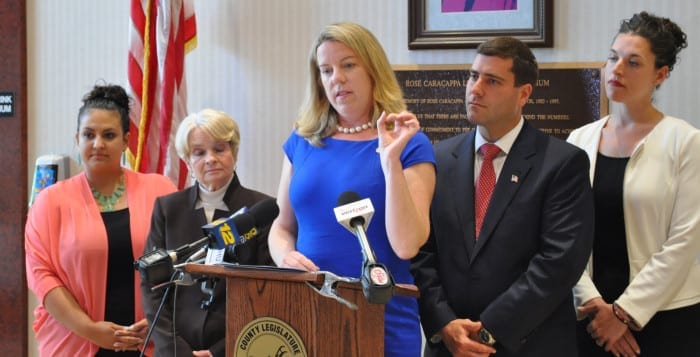By Karen Jillian
On Sunday, May 17, at 4 p.m., the Cinema Arts Centre, 423 Park Ave., Huntington, will host the 9th Annual First Exposure Student Film Festival, a program curated by professional filmmakers from the Suffolk County Film Commission. The event, which will feature the “best of the best” high school short narrative, documentary and animated films, will include a screening of the films and a reception for the filmmakers and members of the audience.
Each year, for the past nine years, Long Island high schools are requested to submit films by their students that were done throughout the year as school projects. This year approximately 28 high schools submitted hundreds of films. The films, according to Skolnick, are “whittled down to a manageable number by a jury of people from the Long Island film industry.” This is done at the Long Island Media Arts Showcase at Five Towns College in Dix Hills. The jury picks from the hundreds that compete, but only a handful make the cut into the First Exposure event.
The winners’ films are shown at the showcase, and they are awarded a certificate and a Cinema Arts membership. Those at the Cinema Arts Centre hope the winners use the membership to “view many of their films to expand their cinematic talents and become better filmmakers,” says Skolnick.
“Long Island is a hotbed of filmmaking. It is just a matter of time before a student establishes a name for him or herself as a major filmmaker!” — Dylan Skolnick, co-director of the Huntington Cinema Arts Centre
There are many types of shorts created such as dramas, comedies, horror films and Public Service Announcements dealing with prevalent subjects such as drunk driving and bullying.
Skolnick says it is not only winning that is important but the process itself. Many of these young filmmakers go on to schools such as the University of Southern California, SUNY Purchase and New York University. Some will also go on to wonderful careers in filmmaking.
Those that do not win entrance into the festival have still done “important work in education and character building by making their films and attempting to be one of the few to enter into the film festival. The skills they acquired participating in these projects and this contest will be helpful in future endeavors,” he added.
While some schools can provide better equipment with which the students can work, students from less well-equipped schools make a good showing as well. Proudly, Skolnick proclaims, there is diversity among the schools participating. “Money can buy a lot of equipment but it cannot buy imagination. The kids make up for their schools not having deep pockets,” Skolnick said.
Come to the Huntington Cinema Art Centre on Sunday, and perhaps you will see a film made by a student who was inspired by the Long Island environment and will follow in the footsteps of some other talented Long Island filmmakers. According to Susan Finkelstein, director of publicity and promotions at the Cinema Arts Centre, “past winners have gone on to … be featured at the Hamptons Film Festival.”
Admission is free and refreshments will be served.The audience can chat with the young filmmaking students after the screening. For more information, call 631-423-7611 or visit www.cinemaartscentre.org.













